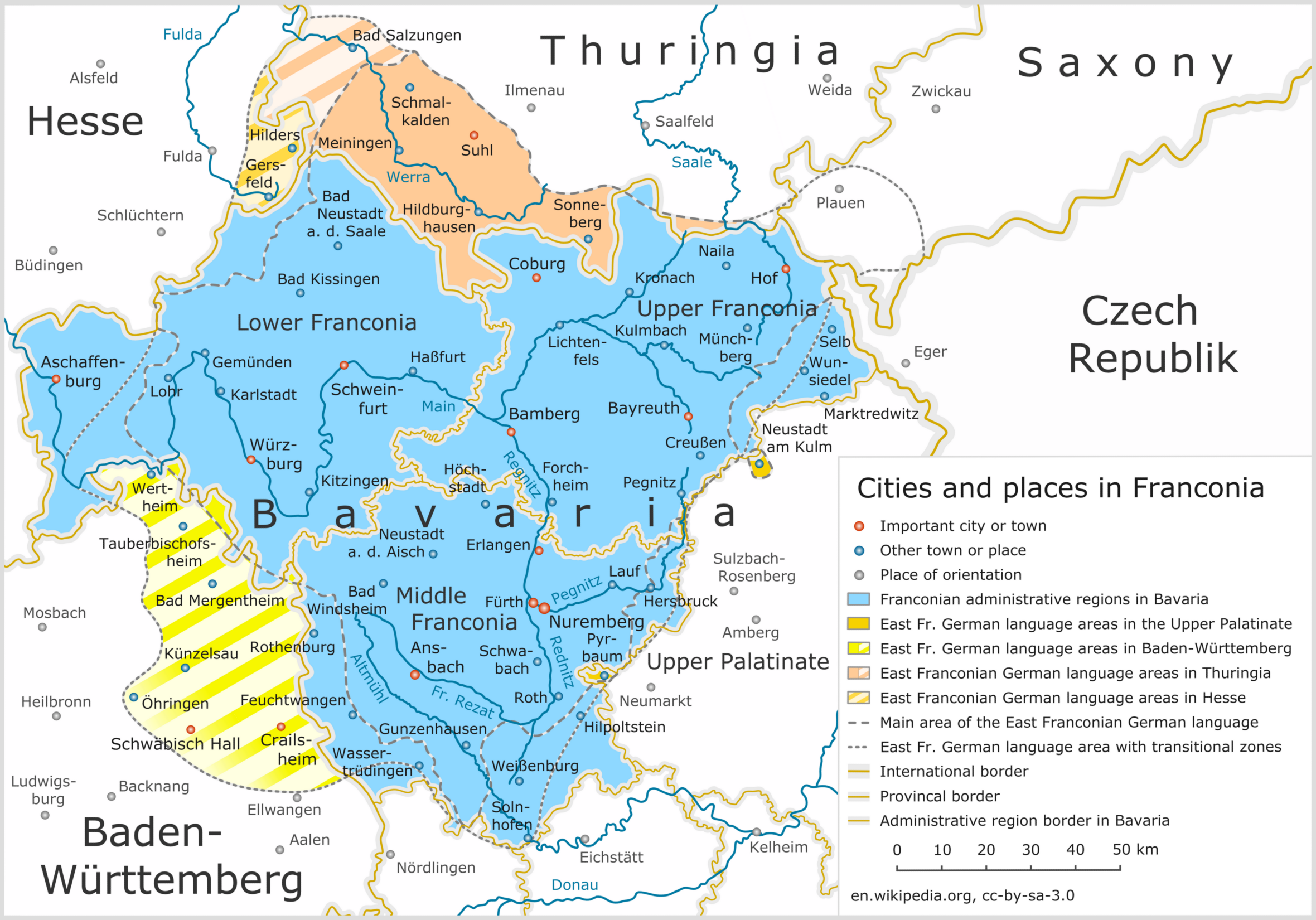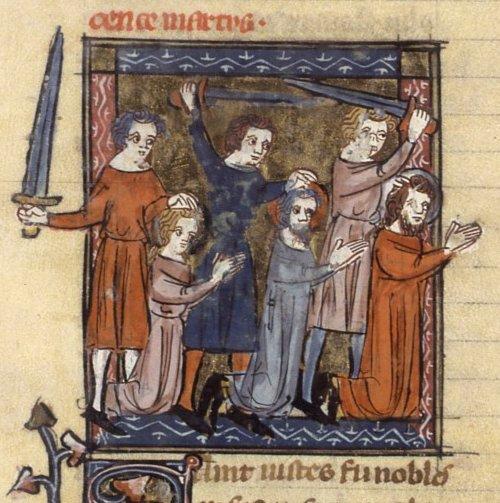|
Theres Abbey
Theres Abbey () was a Benedictine monastery in the village of Theres in the district of Hassberge, in Franconia in the north of Bavaria, Germany. History The monastery, dedicated to Saint Stephen and Saint Vitus, was founded in about 1045 by Bishop Suidger of Bamberg. It was dissolved in 1802 during the secularisation of Bavaria.Vogt, Gabriel: ''Burg und Dorf, Kloster und Schloß Theres am Main. Ein Beitrag zur Geschichte des Dorfes und der ehemaligen Benediktinerabtei St. Vitus zu Theres am Main'', Münsterschwarzach 1979 Buildings The abbey buildings were acquired in 1804 by Theodor von Kretschmann, a government minister of Saxe-Coburg Saxe-Coburg () was a duchy held by the Ernestine branch of the Wettin dynasty in today's Bavaria, Germany. History Ernestine Line When Henry IV, Count of Henneberg – Schleusingen, died in 1347, the possessions of the House of Henneberg .... The church was demolished in 1809. The remaining buildings were converted into a country hou ... [...More Info...] [...Related Items...] OR: [Wikipedia] [Google] [Baidu] |
Benedictine
The Benedictines, officially the Order of Saint Benedict (, abbreviated as O.S.B. or OSB), are a mainly contemplative monastic order of the Catholic Church for men and for women who follow the Rule of Saint Benedict. Initiated in 529, they are the oldest of all the religious orders in the Latin Church. The male religious are also sometimes called the Black Monks, especially in English speaking countries, after the colour of their habits, although some, like the Olivetans, wear white. They were founded by Benedict of Nursia, a 6th-century Italian monk who laid the foundations of Benedictine monasticism through the formulation of his Rule. Benedict's sister, Scholastica, possibly his twin, also became a religious from an early age, but chose to live as a hermit. They retained a close relationship until her death. Despite being called an order, the Benedictines do not operate under a single hierarchy. They are instead organized as a collection of autonomous monasteries ... [...More Info...] [...Related Items...] OR: [Wikipedia] [Google] [Baidu] |
Theres
Theres is a municipality on the river Main, in the district of Haßberge in Bavaria in Germany Germany, officially the Federal Republic of Germany, is a country in Central Europe. It lies between the Baltic Sea and the North Sea to the north and the Alps to the south. Its sixteen States of Germany, constituent states have a total popu .... It was once the site of Theres Abbey, but the church was demolished in 1809. References Haßberge (district) {{Haßberge-geo-stub ... [...More Info...] [...Related Items...] OR: [Wikipedia] [Google] [Baidu] |
Haßberge (district)
Haßberge is a Districts of Germany, ''Landkreis'' (district) in Bavaria, Germany. It is bounded by (from the northeast and clockwise) the districts of Coburg (district), Coburg, Bamberg (district), Bamberg, Schweinfurt (district), Schweinfurt and Rhön-Grabfeld, and by the state of Thuringia (district of Hildburghausen (district), Hildburghausen). History The district was established in 1972 by merging the districts of Haßfurt, Ebern and Hofheim. Geography The district is named after the Haßberge hill chain, which is located south of the Thuringian border. It is an eastern extension of the Rhön Mountains, Rhön mountains and densely forested. South of the hills the Main (river), Main river crosses the district from east to west. South of the river there is the Steigerwald forest, whose northern parts belong to the district. Both the Haßberge hills and the Steigerwald are nature parks. Coat of arms The three jags are from the arms of Würzburg; the lion symbolises the city of ... [...More Info...] [...Related Items...] OR: [Wikipedia] [Google] [Baidu] |
Franconia
Franconia ( ; ; ) is a geographical region of Germany, characterised by its culture and East Franconian dialect (). Franconia is made up of the three (governmental districts) of Lower Franconia, Lower, Middle Franconia, Middle and Upper Franconia in Bavaria, the adjacent, East Franconian, Franconian-speaking South Thuringia, south of the Thuringian Forest—which constitutes the language boundary between Franconian and Thuringian—and the eastern parts of Heilbronn-Franconia in Baden-Württemberg. Those parts of the Vogtland lying in Saxony (largest city: Plauen) are sometimes regarded as Franconian as well, because the Vogtlandian dialects are mostly East Franconian. The inhabitants of Saxon Vogtland, however, mostly do not consider themselves Franconian. On the other hand, the inhabitants of the Hessian dialect, Hessian-speaking parts of Lower Franconia west of the Spessart (largest city: Aschaffenburg) do consider themselves Franconian, although not speaking the dialect. He ... [...More Info...] [...Related Items...] OR: [Wikipedia] [Google] [Baidu] |
Bavaria
Bavaria, officially the Free State of Bavaria, is a States of Germany, state in the southeast of Germany. With an area of , it is the list of German states by area, largest German state by land area, comprising approximately 1/5 of the total land area of Germany, and with over 13.08 million inhabitants, it is the list of German states by population, second most populous German state, behind only North Rhine-Westphalia; however, due to its large land area, its population density is list of German states by population density, below the German average. Major cities include Munich (its capital and List of cities in Bavaria by population, largest city, which is also the list of cities in Germany by population, third largest city in Germany), Nuremberg, and Augsburg. The history of Bavaria includes its earliest settlement by Iron Age Celts, Celtic tribes, followed by the conquests of the Roman Empire in the 1st century BC, when the territory was incorporated into the provinces of Ra ... [...More Info...] [...Related Items...] OR: [Wikipedia] [Google] [Baidu] |
Saint Stephen
Stephen (; ) is traditionally venerated as the protomartyr or first martyr of Christianity."St. Stephen the Deacon" , St. Stephen Diaconal Community Association, Roman Catholic Diocese of Rochester. According to the Acts of the Apostles, he was a deacon in the early church at Jerusalem who angered members of various synagogues by his teachings. Accused of blasphemy at his trial, he made a speech denouncing the Jewish authorities who were sitting in judgment on him and was then stoned to death. Paul the Apostle, Saul of Tarsus, a Pharisee and Roman citizen who would later become an Apostles in the New Testament, apostle, participated in Stephen's execution. The only source for information about Stephen is the New Testament book of the Acts of the Apostles. Stephen is mentioned in Acts 6 as on ... [...More Info...] [...Related Items...] OR: [Wikipedia] [Google] [Baidu] |
Saint Vitus
Vitus (), whose name is sometimes rendered Guy or Guido, was a Christian martyr from Sicily. His surviving hagiography is pure legend. The dates of his actual life are unknown.Basil Watkins, ''The Book of Saints: A Comprehensive Biographical Dictionary'', 8th rev. ed. (Bloomsbury, 2016), p. 758.Donald Attwater, ''The Avenel Dictionary of Saints'' (Avenel Books, 1981), p. 338. He has for long been tied to the Sicilian martyrs Modestus and Crescentia but in the earliest sources it is clear that these were originally different traditions that later became combined.David Hugh Farmer, ''The Oxford Dictionary of Saints'', 5th rev. ed. (Oxford University Press, 2011), s.v. "Vitus (Guy), Modestus, and Crescentia". The figures of Modestus and Crescentia are probably fictitious. According to his hagiography, he died during the Diocletianic Persecution in AD 303. In the Middle Ages, he was counted as one of the Fourteen Holy Helpers. In Germany, his feast was celebrated with dancing be ... [...More Info...] [...Related Items...] OR: [Wikipedia] [Google] [Baidu] |
Bamberg
Bamberg (, , ; East Franconian German, East Franconian: ''Bambärch'') is a town in Upper Franconia district in Bavaria, Germany, on the river Regnitz close to its confluence with the river Main (river), Main. Bamberg had 79,000 inhabitants in 2022. The town dates back to the 9th century, when its name was derived from the nearby ' castle. Cited as one of Germany's most beautiful towns, with medieval streets and buildings, the old town of Bamberg with around 2,400 Timber framing, timber houses has been a UNESCO World Heritage Site since 1993. From the 10th century onwards, Bamberg became a key link with the West Slavs, Western Slavic peoples, notably those of Poland and Pomerania. It experienced a period of great prosperity from the 12th century onwards, during which time it was briefly the centre of the Holy Roman Empire. Holy Roman Emperor, Emperor Henry II, Holy Roman Emperor, Henry II was buried in the old town, alongside his wife Cunigunde of Luxemburg, Kunigunde. The town' ... [...More Info...] [...Related Items...] OR: [Wikipedia] [Google] [Baidu] |
German Mediatisation
German mediatisation (; ) was the major redistribution and reshaping of territorial holdings that took place between 1802 and 1814 in Germany by means of the subsumption and Secularization (church property), secularisation of a large number of Imperial Estates, prefiguring, precipitating, and continuing after the dissolution of the Holy Roman Empire. Most Hochstift, ecclesiastical principalities, free imperial cities, secular principalities, and other minor self-ruling entities of the Holy Roman Empire lost their independent status and were absorbed by the remaining states. By the end of the mediatisation process, the number of German states had been reduced from almost 300 to 39. In the strict sense of the word, mediatisation consists in the subsumption of an Imperial immediacy, immediate () state into another state, thus becoming ''mediate'' (), while generally leaving the dispossessed ruler with his private estates and a number of privileges and feudal rights, such as High, m ... [...More Info...] [...Related Items...] OR: [Wikipedia] [Google] [Baidu] |
Saxe-Coburg
Saxe-Coburg () was a duchy held by the Ernestine branch of the Wettin dynasty in today's Bavaria, Germany. History Ernestine Line When Henry IV, Count of Henneberg – Schleusingen, died in 1347, the possessions of the House of Henneberg – Schleusingen were divided between his widow, Jutta of Brandenburg-Salzwedel, and Henry's younger brother, John, and Jutta was given the so-called “''neues Herrschaft''” ("new lordship"), with Coburg among other properties. The death of Jutta six years later was followed by the division of the new ''Herrschaft'' amongst three of her daughters. The second daughter, Catherine of Henneberg, was awarded the southeastern part of the Coburgish land. After their wedding in 1346, Catherine's husband, Frederick III, the Margrave of Meissen from the House of Wettin, asked for his wife's dowry, the Coburgish land called the ''Pflege Coburg''; but his father-in-law resisted the devolution, and Frederick III could not touch it until after th ... [...More Info...] [...Related Items...] OR: [Wikipedia] [Google] [Baidu] |
Benedictine Monasteries In Germany
The Benedictines, officially the Order of Saint Benedict (, abbreviated as O.S.B. or OSB), are a mainly Christian mysticism, contemplative Christian monasticism, monastic Religious order (Catholic), order of the Catholic Church for men and for women who follow the Rule of Saint Benedict. Initiated in 529, they are the oldest of all the religious orders in the Latin Church. The male religious are also sometimes called the Black Monks, especially in English speaking countries, after the colour of their religious habit, habits, although some, like the Olivetans, wear white. They were founded by Benedict of Nursia, a 6th-century Italian monk who laid the foundations of Benedictine monasticism through the formulation of his Rule. Benedict's sister, Scholastica, possibly his twin, also became a religious from an early age, but chose to live as a hermit. They retained a close relationship until her death. Despite being called an order, the Benedictines do not operate under a single ... [...More Info...] [...Related Items...] OR: [Wikipedia] [Google] [Baidu] |







